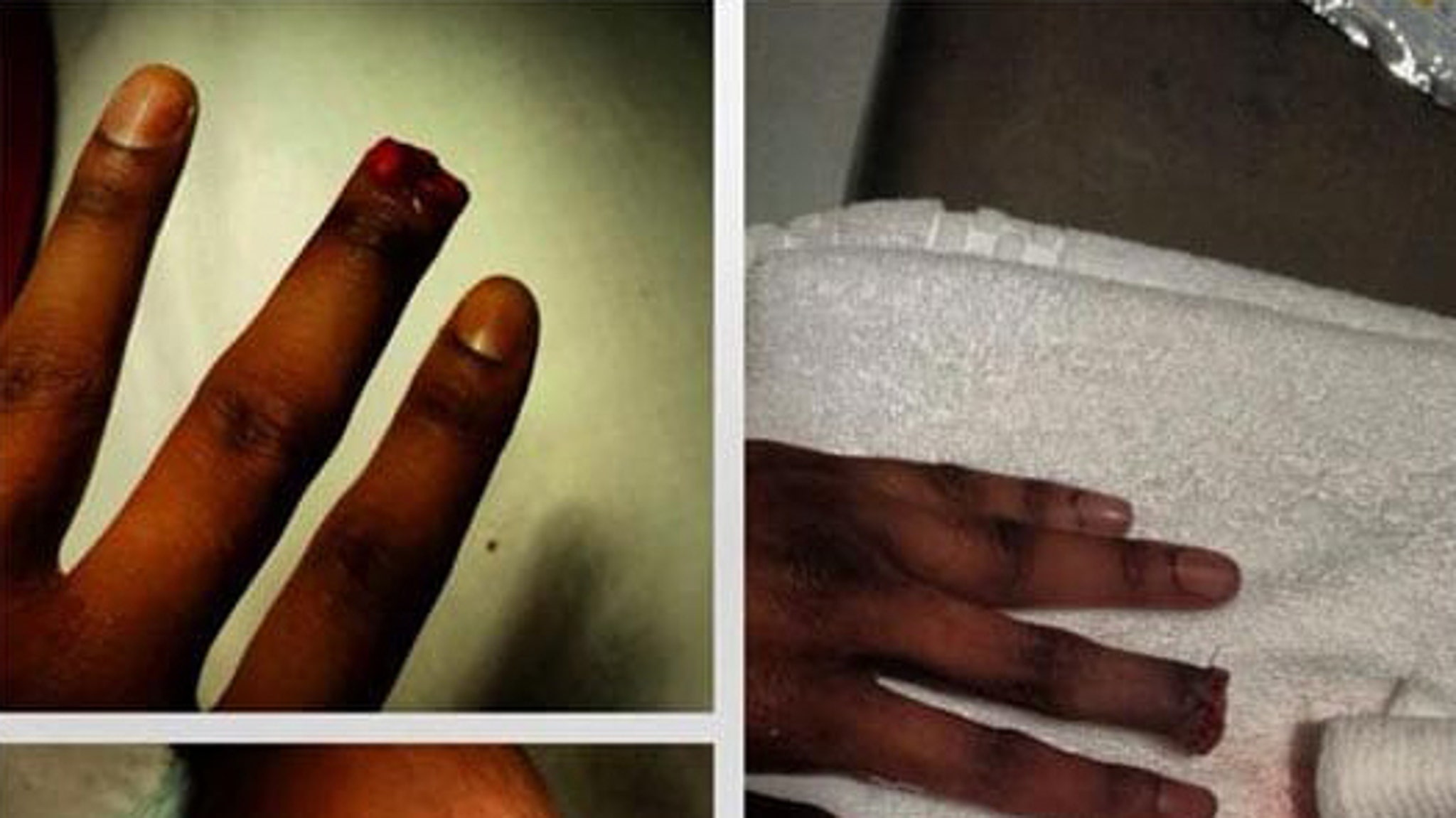Real gore is a topic that sparks curiosity, fear, and sometimes even outrage among people around the globe. It’s not just about blood and guts—it’s about understanding why some individuals are drawn to extreme content, while others want it banned outright. In today’s digital age, where anything can be accessed with a click, the line between curiosity and exploitation has become increasingly blurred.
Now, I get it—talking about real gore might seem taboo or uncomfortable. But let’s face it, this isn’t going anywhere anytime soon. From viral videos on social media to underground forums, the demand for explicit content continues to grow. So, why not explore what drives this phenomenon? Stick around, because we’re diving deep into the gritty details.
Whether you’re here out of curiosity or concern, this article aims to shed light on the subject without sensationalizing it. We’ll discuss the psychology behind why people consume real gore, its impact on mental health, and how society can address this growing issue. And hey, if you’re brave enough to stick around, you might just learn something new.
- Lisa Welchel The Multitalented Mom From Americas Favorite Sitcom
- Hamel Veronica The Rising Star You Need To Know About
What Exactly is Real Gore?
Let’s break it down real quick. Real gore refers to content that showcases graphic violence, death, or injury. This could range from accident footage, animal cruelty, to even more disturbing material. It’s not exactly something you’d find casually scrolling through TikTok, but trust me, it’s out there—and it’s big business.
One thing to note is that real gore isn’t just limited to illegal content. Some of it exists in plain sight, masquerading as “educational” or “historical” material. For instance, medical students might study autopsy videos, while historians analyze war footage. The difference lies in intent and context, but more on that later.
Types of Real Gore Content
Here’s a quick rundown of the different categories you might stumble upon:
- Don Johnson Melanie Griffith A Hollywood Love Story That Stood The Test Of Time
- Emilys Friends A Deep Dive Into Her Inner Circle And Their Impact
- Accidents and Disasters: Think car crashes, natural disasters, or workplace mishaps.
- Violent Crimes: Footage of murders, assaults, or terrorist attacks.
- Medical Procedures: Autopsies, surgeries, or other invasive procedures.
- Animal Cruelty: Videos depicting harm to animals, often used as bait for unsuspecting viewers.
- Underground Content: The dark web’s version of entertainment, where anything goes.
Each type serves a different purpose, whether it’s shock value, education, or plain old exploitation. But one thing’s for sure—real gore has a way of sticking with you long after you’ve seen it.
Why Do People Watch Real Gore?
This is the million-dollar question, isn’t it? Why would anyone willingly subject themselves to such disturbing content? Well, it turns out there are several reasons, and they’re not all as twisted as you might think.
Psychological Factors
Humans are naturally curious creatures. When we see something shocking, our brains go into overdrive trying to process it. This is partly due to the release of adrenaline, which makes us feel more alert and engaged. Some people even develop a tolerance for graphic content, leading them to seek out more intense material over time.
Then there’s the concept of desensitization. The more you expose yourself to violence, the less it affects you emotionally. This can be both a blessing and a curse, depending on how far you take it. On one hand, it might help someone cope with trauma. On the other, it could lead to a complete lack of empathy.
The Dark Side of Real Gore
Let’s not sugarcoat it—real gore has some serious downsides. For starters, consuming too much of it can mess with your mental health big time. Anxiety, depression, and PTSD are just a few of the potential side effects. And that’s not even mentioning the ethical implications of sharing or profiting from someone else’s suffering.
Take, for example, the rise of so-called “snuff films.” These are videos allegedly showing real murders, often staged for entertainment purposes. While the authenticity of many such clips is debatable, the fact that they exist at all is alarming. It raises questions about where we draw the line between free expression and exploitation.
Impact on Society
Beyond individual harm, real gore also affects society as a whole. It perpetuates a culture of violence, normalizing behaviors that should be condemned. Moreover, it fuels the demand for even more extreme content, creating a vicious cycle that’s hard to break.
But here’s the kicker: banning all real gore outright isn’t the answer either. That would infringe on free speech rights and open the door to censorship. Instead, we need to focus on education and regulation, ensuring that people understand the risks involved.
How to Stay Safe in the Digital Age
So, what can you do to protect yourself from the darker corners of the internet? First and foremost, practice digital literacy. Learn to spot fake news, deepfakes, and other forms of manipulated content. If something seems too graphic or unbelievable, it probably is.
Another tip is to limit your exposure to disturbing material. Set boundaries for yourself and stick to them. If you’re feeling overwhelmed, take a break and engage in healthier activities, like exercise or meditation. Remember, your mental health matters more than any viral video.
Tools and Resources
Luckily, there are plenty of tools available to help you stay safe online. Parental controls, content filters, and privacy settings can all make a big difference. Additionally, organizations like the National Center for Missing & Exploited Children offer resources for reporting illegal content.
Don’t forget to talk to someone if you’re struggling. Whether it’s a friend, family member, or mental health professional, reaching out can be incredibly beneficial. You don’t have to go through this alone.
Real Gore in the Media
Speaking of media, real gore has made its way into mainstream entertainment over the years. Movies like “The Human Centipede” and TV shows like “American Horror Story” push the boundaries of what’s considered acceptable. While they may not feature actual gore, they certainly toe the line.
Even news outlets aren’t immune. Sensationalized reporting of violent crimes or disasters can blur the line between informing the public and exploiting tragedy. This raises questions about journalistic ethics and responsibility in an era of clickbait headlines.
Case Studies
One infamous example is the Boston Marathon bombing in 2013. Social media platforms were flooded with graphic images and videos of the aftermath, sparking outrage among users. In response, many companies tightened their content moderation policies, but not before the damage was done.
Another case involves the live-streaming of violent acts, such as the Christchurch mosque shootings in 2019. This incident highlighted the need for better real-time monitoring and removal of harmful content. It also sparked a global conversation about the role of tech companies in regulating user-generated content.
Legal Implications of Real Gore
When it comes to real gore, legality varies depending on the country and context. In some places, sharing certain types of content is punishable by law, while in others, it’s considered protected speech. Navigating this complex landscape requires a nuanced understanding of both local and international regulations.
For instance, in the United States, the First Amendment protects most forms of expression, including graphic content. However, this doesn’t extend to child pornography or other forms of illegal material. Similarly, countries like Germany have strict laws against Nazi propaganda and hate speech, making it harder for extreme content to thrive.
Enforcement Challenges
Despite these laws, enforcement remains a challenge. The sheer volume of content uploaded daily makes it nearly impossible to catch everything. Add to that the anonymity of the internet, and you’ve got a recipe for chaos.
That’s why collaboration between governments, tech companies, and civil society is crucial. By working together, we can develop more effective strategies for combating the spread of harmful content while respecting individual rights.
Conclusion: Where Do We Go From Here?
Real gore is a complex issue with no easy answers. While it may satisfy some people’s morbid curiosity, it also poses significant risks to mental health and societal well-being. As we continue to grapple with its implications, it’s important to approach the topic with both caution and empathy.
So, what can you do? Educate yourself, set boundaries, and advocate for responsible content creation and consumption. Together, we can create a safer, more informed digital world—one click at a time.
And hey, don’t forget to share your thoughts in the comments below. Do you think real gore serves a purpose, or should it be banned altogether? Let’s keep the conversation going!
Table of Contents
- What Exactly is Real Gore?
- Why Do People Watch Real Gore?
- Psychological Factors
- The Dark Side of Real Gore
- Impact on Society
- How to Stay Safe in the Digital Age
- Tools and Resources
- Real Gore in the Media
- Case Studies
- Legal Implications of Real Gore
- Enforcement Challenges
- Conclusion



Detail Author:
- Name : Garnett Luettgen
- Username : edna78
- Email : shany.jakubowski@kautzer.org
- Birthdate : 1992-04-03
- Address : 45437 O'Reilly Stravenue Suite 123 Odessaport, PA 81568
- Phone : +1 (540) 425-7651
- Company : Hauck, Carter and Raynor
- Job : Petroleum Pump System Operator
- Bio : Totam animi quod id quidem est eveniet eveniet. Et provident nostrum iusto quia nisi in adipisci. Perferendis sapiente et dolor velit quia quia.
Socials
facebook:
- url : https://facebook.com/ahyatt
- username : ahyatt
- bio : Rerum sit quod et quia deleniti praesentium.
- followers : 733
- following : 1437
linkedin:
- url : https://linkedin.com/in/abel_id
- username : abel_id
- bio : Quia cumque eum deserunt quo neque non.
- followers : 4259
- following : 1676
tiktok:
- url : https://tiktok.com/@hyatt2020
- username : hyatt2020
- bio : Nam atque quas et et. Nisi eos eius voluptatem aspernatur odit corrupti in.
- followers : 1942
- following : 1169